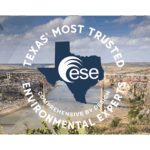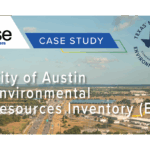
Phase 1 Environmental Site Assessments (ESA) play a critical role in assessing potential environmental risks associated with a property. In Amarillo, Texas, these assessments are particularly important due to the rapidly expanding urbanization and industrial development in the region. Understanding the importance of Phase 1 ESAs, as well as the process and potential concerns specific to Amarillo, is essential for property owners, developers, and investors in ensuring environmental protection and compliance.
Understanding the Importance of Phase 1 Environmental Site Assessments
Phase 1 ESAs provide a comprehensive evaluation of environmental risks associated with a property, helping stakeholders make informed decisions regarding its purchase or development. These assessments aim to identify recognized environmental conditions (RECs), which are the potential presence of hazardous substances, pollutants, or contaminants on the property. By conducting a Phase 1 ESA, stakeholders can assess and manage the risks associated with these RECs, minimizing potential liabilities and ensuring compliance with environmental regulations.
The Role of Phase 1 Assessments in Environmental Protection
Phase 1 ESAs play a crucial role in environmental protection. They help identify potential environmental issues, such as soil and groundwater contamination, that may compromise human health, damage ecosystems, or lead to legal consequences. Additionally, by identifying and addressing potential risks at an early stage, Phase 1 ESAs contribute to sustainable development and the preservation of natural resources.
Key Components of a Phase 1 Environmental Site Assessment
A Phase 1 ESA typically includes several key components to ensure a comprehensive evaluation of a property’s environmental risks. These may include:
- Initial Site Inspection: A visual examination of the property, both on-site and nearby, to identify any potential signs of contamination or environmental hazards.
- Historical Review: Thorough research of historical records, including aerial photos, topographic maps, and building permits, to identify past and present land uses that may have contributed to environmental concerns.
Another important component of a Phase 1 ESA is the review of regulatory databases. This involves conducting a thorough search of federal, state, and local databases to identify any known environmental violations or enforcement actions associated with the property or surrounding areas. This step helps stakeholders understand the regulatory history of the site and assess the potential risks and liabilities associated with it.
In addition to the above components, a Phase 1 ESA may also include interviews with current and past property owners, occupants, and neighboring businesses. These interviews provide valuable insights into the property’s history, potential sources of contamination, and any ongoing environmental concerns that may not be evident through visual inspections or historical research alone.
Furthermore, a Phase 1 ESA may involve the collection and analysis of soil, groundwater, and air samples. This testing helps determine the presence and concentration of hazardous substances or contaminants on the property, providing a more accurate assessment of the environmental risks involved.
By including these additional components in a Phase 1 ESA, stakeholders can gain a more comprehensive understanding of the environmental risks associated with a property. This detailed evaluation allows for better decision-making, risk management, and the implementation of appropriate mitigation measures to protect human health, the environment, and the overall sustainability of the site.
The Process of Conducting a Phase 1 Environmental Site Assessment in Amarillo
The process of conducting a Phase 1 ESA in Amarillo involves several steps, each crucial in gathering necessary information and assessing potential environmental risks specific to the region.
Initial Site Inspection and Historical Review
During the initial site inspection, environmental professionals thoroughly examine the property, noting any visible signs of potential contamination, such as storage tanks, chemical spills, or deteriorating structures. Additionally, a historical review helps establish a property’s environmental timeline, providing vital context about previous land uses and potential areas of concern.
Interviewing Property Owners and Occupants
Engaging with current or previous property owners and occupants is another crucial step in the Phase 1 ESA process. These interviews can provide valuable insights into past site activities and potential sources of contamination. It is essential to carry out these interviews with objectivity and discretion, ensuring the confidentiality of the information provided.
Reviewing Government Records and Reports
Reviewing government records and reports is an integral part of the Phase 1 ESA process. This includes examining public records related to environmental permits, enforcement actions, spills, and other relevant information. Such records provide valuable data for identifying potential environmental concerns and assessing the level of regulatory compliance.
Potential Environmental Concerns in Amarillo
Amarillo, like many other growing urban areas, faces unique environmental challenges that need to be addressed through thorough Phase 1 ESAs.
Soil Contamination Issues
With historical industrial activities and agricultural practices, soil contamination is a significant concern in Amarillo. Heavy metals, petroleum hydrocarbons, and pesticides are commonly found contaminants that can pose risks to human health and the ecosystem if not properly managed.
Groundwater and Surface Water Contamination
Amarillo’s proximity to various industrial activities increases the potential for groundwater and surface water contamination. Improper chemical disposal, leaks, and accidental spills can introduce harmful substances into these water sources, affecting both human and ecological well-being.
Hazardous Materials and Waste Management
The safe management and disposal of hazardous materials are critical to environmental protection in Amarillo. Ensuring compliance with proper storage, handling, and disposal methods is essential to prevent potential contamination and associated risks.
Interpreting the Results of a Phase 1 Environmental Site Assessment
Interpreting the results of a Phase 1 ESA requires a thorough understanding of the identified recognized environmental conditions (RECs) and their implications.
Identifying Recognized Environmental Conditions (RECs)
RECs identified during a Phase 1 ESA refer to potential environmental risks associated with a property. These risks may include the presence of hazardous substances, pollutants, or contaminants that could require further assessment or remediation actions.
Understanding the Implications of RECs
Recognizing the implications of identified RECs is crucial for stakeholders in making informed decisions regarding property acquisition, development plans, or risk management strategies. Environmental professionals can provide expert advice and guidance on mitigating potential liabilities and ensuring compliance with relevant regulations.
Next Steps After a Phase 1 Environmental Site Assessment
Following the completion of a Phase 1 ESA, stakeholders may need to take further actions depending on the identified risks and objectives for the property.
When is a Phase 2 Environmental Site Assessment Necessary?
If a Phase 1 ESA reveals significant potential environmental risks, it may be necessary to conduct a Phase 2 ESA. Phase 2 assessments involve collecting subsurface samples, conducting laboratory analyses, and evaluating the extent and severity of identified contamination to determine the most appropriate remediation strategies.
Remediation Strategies for Identified Environmental Concerns
If environmental concerns are identified through a Phase 1 ESA or further confirmed by a Phase 2 ESA, implementing appropriate remediation strategies becomes crucial. These strategies may include soil and groundwater remediation, containment measures, or the removal and disposal of hazardous substances in compliance with relevant regulations.
In conclusion, Phase 1 Environmental Site Assessments are indispensable tools for identifying potential environmental risks associated with properties in Amarillo. By understanding their importance, following the appropriate assessment process, and addressing potential concerns, stakeholders can ensure environmental protection, regulatory compliance, and the sustainable development of the region.
Ready to take the next step in ensuring the environmental integrity and compliance of your property in Amarillo? ESE Partners is here to guide you through the complexities of Phase 1 Environmental Site Assessments and beyond. Our team of skilled environmental engineers and scientists specializes in delivering tailored solutions that align with your unique needs and regulatory obligations. With a commitment to improving community quality of life and providing opportunity, ESE Partners offers innovative, sustainable, and quality-driven services. Don’t let environmental concerns slow your progress. Request A Proposal today and responsibly move your business forward with ESE Partners.








